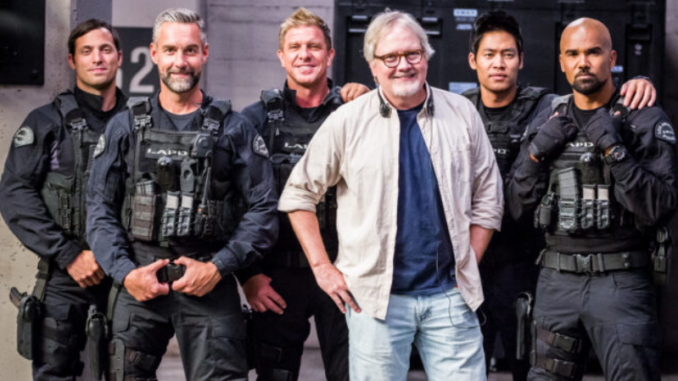
The television series S.W.A.T. has captivated audiences with its intense action sequences, compelling characters, and real-world relevance. But the inspiration behind this popular show dates back several decades, drawing from both historical events and earlier entertainment that reflected the complexities of law enforcement. Let’s explore the origins and inspiration behind S.W.A.T., highlighting key moments and dates that shaped its development.
1. The Birth of S.W.A.T. Teams:

The concept of Special Weapons and Tactics (S.W.A.T.) teams originated in the late 1960s in response to rising crime rates and civil unrest in the United States. The Los Angeles Police Department (LAPD) is credited with creating the first official S.W.A.T. team. The team was formed under the leadership of then-LAPD Inspector Daryl F. Gates, who would later become the Chief of the LAPD. The first S.W.A.T. unit was established in 1967 and was designed to handle situations that exceeded the capabilities of ordinary police forces, such as hostage rescues, counterterrorism operations, and riots.
2. The Original S.W.A.T. TV Series (1975):

The inspiration for the modern S.W.A.T. series can be traced back to the original TV show that aired on ABC in the mid-1970s. Premiering on February 24, 1975, the original S.W.A.T. was created by Robert Hamner and developed by Rick Husky. The show was part of a wave of action-packed police dramas that were popular during that era. It followed the exploits of a S.W.A.T. team led by Lieutenant Dan “Hondo” Harrelson, a character who would later be reimagined in the 2017 reboot. The show’s iconic theme song, composed by Barry De Vorzon, became a hit and is still recognized today.
Though the original S.W.A.T. series only lasted two seasons, ending on April 3, 1976, it left a lasting impression on the genre of police procedurals and laid the groundwork for future adaptations.
3. The 2003 Film Adaptation:

On August 8, 2003, the S.W.A.T. franchise was revived with a feature film adaptation directed by Clark Johnson. The movie starred Samuel L. Jackson as Sergeant Dan “Hondo” Harrelson, alongside Colin Farrell, Michelle Rodriguez, and LL Cool J. The film took inspiration from the original TV series but updated the story and characters to fit a contemporary setting. The success of the 2003 film demonstrated that the concept of S.W.A.T. was still relevant and could resonate with modern audiences, paving the way for future adaptations.
4. The 2017 TV Reboot:

The modern S.W.A.T. series, which premiered on November 2, 2017, on CBS, is a direct reboot of the 1975 show but with significant updates to reflect current societal issues. Developed by Shawn Ryan and Aaron Rahsaan Thomas, the 2017 S.W.A.T. series draws inspiration from both the original show and the real-life S.W.A.T. teams that have become an integral part of law enforcement in the United States.
The show stars Shemar Moore as Sergeant Daniel “Hondo” Harrelson, a character who embodies the leadership and moral challenges faced by modern police officers. The 2017 series goes beyond action and thrills, tackling complex issues such as racial tensions, police-community relations, and the personal lives of the officers. The reboot has been praised for its ability to balance entertainment with social commentary, making it relevant to contemporary viewers.
5. The Real-World Impact:
The inspiration for S.W.A.T. is deeply rooted in the real-world need for specialized police units capable of handling extraordinary situations. The show’s portrayal of these units not only entertains but also educates the public about the challenges and responsibilities that come with being part of a S.W.A.T. team. The series has also sparked conversations about the role of law enforcement in society and the importance of trust between police officers and the communities they serve.
The inspiration behind S.W.A.T. is a blend of historical events, earlier television portrayals, and the evolving landscape of law enforcement. From its origins in the 1960s to its latest incarnation in 2017, S.W.A.T. has remained a powerful narrative that resonates with audiences by reflecting the complexities of policing in a changing world. As the show continues to evolve, it remains true to its roots while addressing the pressing issues of our time.
